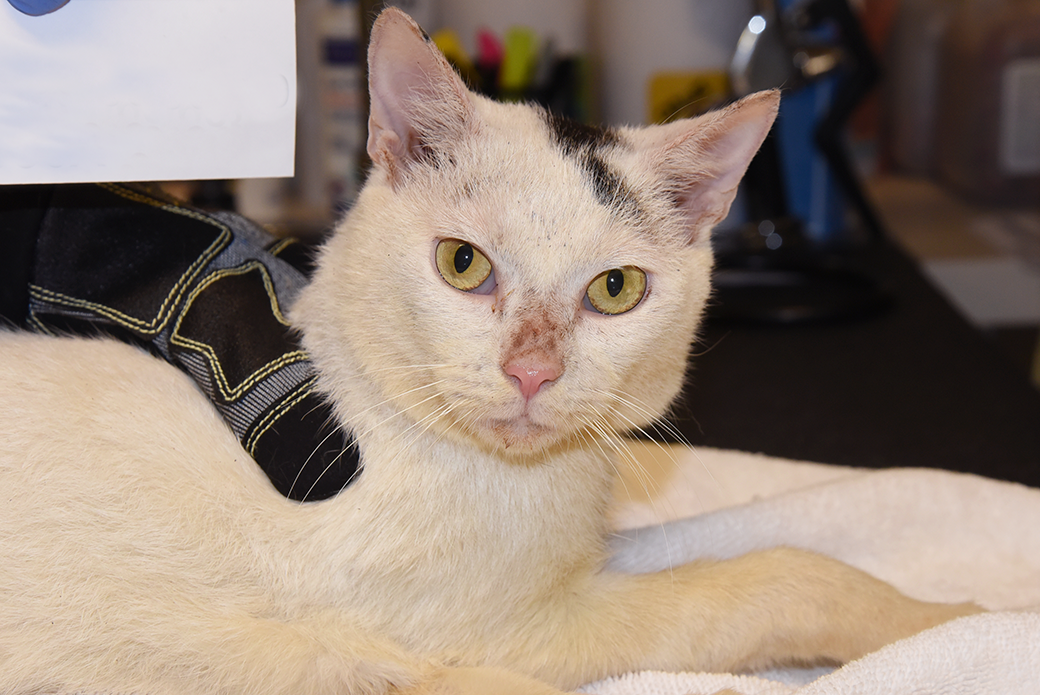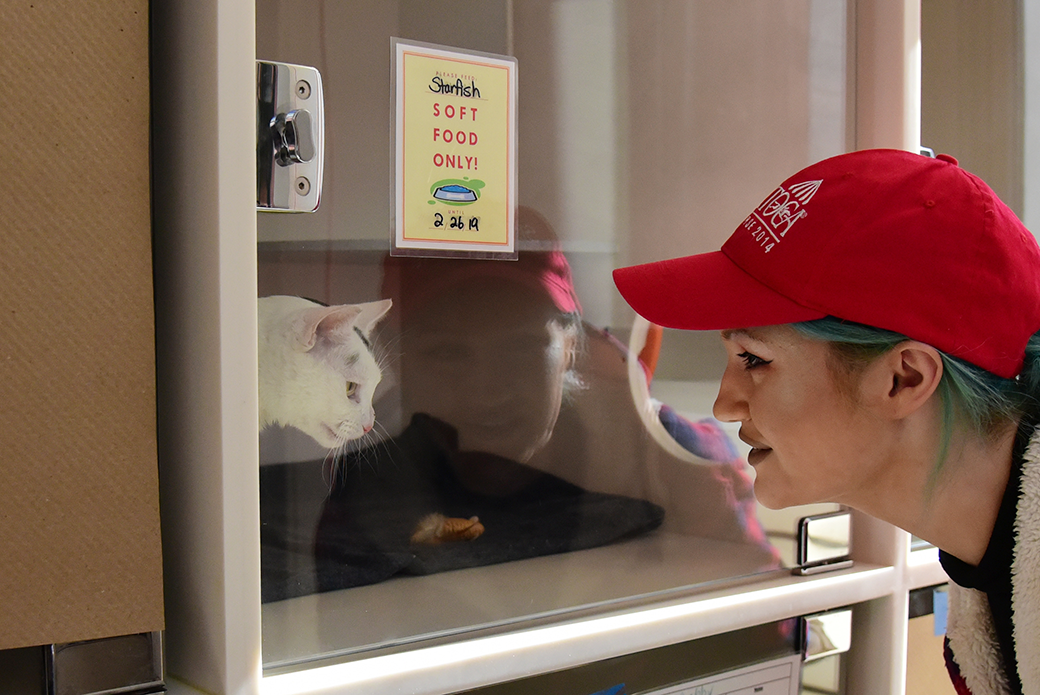happy-tail_starfish_061219_main.png


Just as some starfish can regrow lost parts of their bodies over time, a two-year-old, once-neglected cat named Starfish has also found a way to start anew.
On June 17, 2018, the ASPCA assisted the New York Police Department (NYPD) with the removal of 48 animals from a residence in the Bronx. Among the 34 cats, 13 dogs and one hamster living in unsafe and unsanitary conditions was Starfish.
Starfish had fleas and dental disease, as well as an ear infection, and was underweight. His coat was stained from prolonged contact to urine and feces according to Dr. Alison Liu, an ASPCA Forensic Veterinarian who oversaw Starfish’s case.
happy-tail_starfish_061219_body1.png


Starfish would also not tolerate human handling. He was caught in a humane trap and arrived at the ASPCA a week after the other animals.
“Starfish was completely shut down at first,” recalls Adi Hovav, ASPCA Behavior Manager, who placed Starfish into a quiet office where he could adjust when he first came to the ASPCA Adoption Center.
happy-tail_starfish_061219_body2.png


“It took nearly a month of daily behavior work using play and food before Starfish revealed his social side,” adds Adi. “Interestingly, he loved watching YouTube videos of cats—he’d hear the meowing and he would meow back! In the end, Starfish far exceeded our expectations. We were thrilled just to see some glimmers of social behavior and as time progressed, he became a real social butterfly.”
happy-tail_starfish_061219_body3.png


Once Starfish was treated and pronounced medically sound, he and many of the animals from his case were placed in foster homes until their criminal case was resolved.
“Fostering not only helps animals, it can be a direct and impactful conduit to adoption,” explains Eileen Hanavan, ASPCA Director of Volunteer and Foster Engagement. “Fostering allows the animals to experience the comforts of a home and develop strong bonds with their human caregivers.”
Starfish was welcomed into foster caregiver Krista C.’s Lower East Side apartment on Halloween 2018.
happy-tail_starfish_061219_body4.png


“When I saw his little face and read his bio, I couldn’t resist,” recalls Krista, explaining the email blast that showcased the foster-ready animals. “It said he could be ‘a little too forward and talkative,’ and that really got to me.”
On February 19, when the animals were legally made available for adoption, Krista made Starfish’s adoption official.
happy-tail_starfish_061219_body5.png


“He loves to cuddle,” Krista says, explaining how well-behaved and respectful Starfish turned out to be.
“Much to our delight, almost half of the animals from this case—including Starfish—were ‘Foster Fortunes,’ meaning they become permanent members of their foster families. This is a great outcome and cause for celebration,” says Eileen, whose team has since implemented an “On-Deck Foster Roster,” a queue system that moves animals into foster homes more efficiently.
Today, instead of competing for resources and living in unsanitary conditions, Starfish has plenty of amenities in Krista’s home, including stairs for climbing, plenty of food, windows for surveying pigeons and videos to watch—this time of himself.
happy-tail_starfish_061219_body6.png


Originally published on Kittentoob.
Source: Read Full Article



